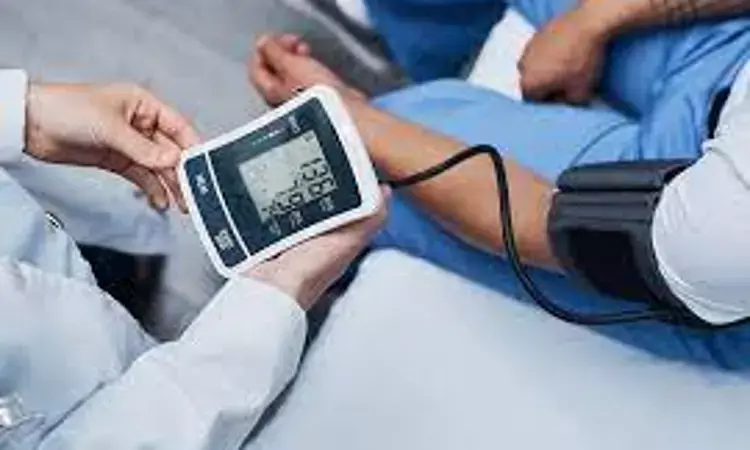- Home
- Medical news & Guidelines
- Anesthesiology
- Cardiology and CTVS
- Critical Care
- Dentistry
- Dermatology
- Diabetes and Endocrinology
- ENT
- Gastroenterology
- Medicine
- Nephrology
- Neurology
- Obstretics-Gynaecology
- Oncology
- Ophthalmology
- Orthopaedics
- Pediatrics-Neonatology
- Psychiatry
- Pulmonology
- Radiology
- Surgery
- Urology
- Laboratory Medicine
- Diet
- Nursing
- Paramedical
- Physiotherapy
- Health news
- Fact Check
- Bone Health Fact Check
- Brain Health Fact Check
- Cancer Related Fact Check
- Child Care Fact Check
- Dental and oral health fact check
- Diabetes and metabolic health fact check
- Diet and Nutrition Fact Check
- Eye and ENT Care Fact Check
- Fitness fact check
- Gut health fact check
- Heart health fact check
- Kidney health fact check
- Medical education fact check
- Men's health fact check
- Respiratory fact check
- Skin and hair care fact check
- Vaccine and Immunization fact check
- Women's health fact check
- AYUSH
- State News
- Andaman and Nicobar Islands
- Andhra Pradesh
- Arunachal Pradesh
- Assam
- Bihar
- Chandigarh
- Chattisgarh
- Dadra and Nagar Haveli
- Daman and Diu
- Delhi
- Goa
- Gujarat
- Haryana
- Himachal Pradesh
- Jammu & Kashmir
- Jharkhand
- Karnataka
- Kerala
- Ladakh
- Lakshadweep
- Madhya Pradesh
- Maharashtra
- Manipur
- Meghalaya
- Mizoram
- Nagaland
- Odisha
- Puducherry
- Punjab
- Rajasthan
- Sikkim
- Tamil Nadu
- Telangana
- Tripura
- Uttar Pradesh
- Uttrakhand
- West Bengal
- Medical Education
- Industry
Conventional brachial cuff BP fails to accurately estimate true BP in women with shorter height: JAMA

Conventional brachial cuff BP fails to accurately estimate true BP in women with shorter height according to a recent study published in the JAMA Network Open.
Women are at higher risk of cardiovascular events than men with similar blood pressure (BP). Whether this discrepancy in risk is associated with the accuracy of brachial cuff BP measurements is unknown.
A study was conducted to examine the difference in brachial cuff BP accuracy in men and women compared with invasively measured aortic BP and to evaluate whether noninvasive central BP estimation varies with sex.
This cross-sectional study enrolled 500 participants without severe aortic stenosis or atrial fibrillation from January 1 to December 31, 2019, who were undergoing nonurgent coronary angiography at a tertiary care academic hospital. Sex differences in accuracy were determined by calculating the mean difference between the noninvasive measurements (brachial and noninvasive central BP) and the invasive aortic BP (reference). Linear regression and mediation analyses were performed to identify mediators between sex and brachial cuff accuracy.
Results
- This study included 500 participants
- Baseline characteristics were similar for both sexes apart from body habitus.
- Despite similar brachial cuff systolic BP (SBP) (mean [SD], 124.5 [17.7] mm Hg in women vs 124.4 [16.4] in men; P = .97), invasive aortic SBP was higher in women.
- The brachial cuff was relatively accurate compared with invasive aortic SBP estimation in men but not in women
- Noninvasive central SBP (calibrated for mean and diastolic BP) was more accurate in women (mean [SD] difference, 0.6 [15.3] mm Hg) than in men
Thus, in this cross-sectional study, women had higher true aortic SBP than men with similar brachial cuff SBP, an association that was mostly mediated by a shorter stature. This difference in BP measurement may lead to unrecognized undertreatment of women and could partly explain why women are at greater risk for cardiovascular diseases for a given brachial cuff BP than men. These findings may justify the need to study sex-specific BP targets or integration of sex-specific parameters in BP estimation algorithms.
Reference:
Accuracy Difference of Noninvasive Blood Pressure Measurements by Sex and Height by Yasmine Abbaoui et al. published in the JAMA Network Open.
doi:10.1001/jamanetworkopen.2022.15513
Keywords:
Accuracy, Difference, Noninvasive, Blood, Pressure, Measurements, Sex, Height, Yasmine Abbaoui, JAMA Network Open, Catherine Fortier, Louis-Charles Desbiens, Cédric Kowalski, Florence Lamarche, Annie-Claire Nadeau-Fredette, François Madore, Mohsen Agharazii, Rémi Goupil
Dr. Shravani Dali has completed her BDS from Pravara institute of medical sciences, loni. Following which she extensively worked in the healthcare sector for 2+ years. She has been actively involved in writing blogs in field of health and wellness. Currently she is pursuing her Masters of public health-health administration from Tata institute of social sciences. She can be contacted at editorial@medicaldialogues.in.
Dr Kamal Kant Kohli-MBBS, DTCD- a chest specialist with more than 30 years of practice and a flair for writing clinical articles, Dr Kamal Kant Kohli joined Medical Dialogues as a Chief Editor of Medical News. Besides writing articles, as an editor, he proofreads and verifies all the medical content published on Medical Dialogues including those coming from journals, studies,medical conferences,guidelines etc. Email: drkohli@medicaldialogues.in. Contact no. 011-43720751


